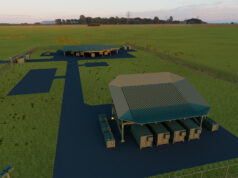The Ministry of Defence has confirmed that it continues to assess the strategic and economic benefits of developing a domestic space launch capability, citing both national and NATO priorities in the evolving space domain.
In a written question to the Secretary of State for Defence, James Cartlidge MP (Conservative – South Suffolk) asked whether any recent assessment had been made on the merits of constructing a UK-based space launch facility.
Responding on 27 March, Defence Minister Maria Eagle stated that satellite launch demand across Europe is projected to be worth $50 billion up to 2033.
“Capturing even 2% of this would bring around $1 billion in revenues for the UK economy,” she said. “Positioning the UK with growing launch capabilities is a key part of our ambitions to be a global space player, and foster strategic independence.”
Eagle added that, beyond commercial opportunity, the ability to develop and sustain sovereign launch capabilities would carry long-term strategic value for the UK.
“That is why we are supporting the development of a sustainable UK launch industry, collaborating with both industry and international partners,” she said.
The Minister also confirmed that the UK is actively engaged in NATO’s STARLIFT programme, aimed at strengthening the alliance’s collective ability to launch and sustain space assets.
“Additionally, the UK is involved in NATO’s STARLIFT programme to enhance space launch capabilities within the alliance, ensuring preparedness for future launch requirements,” Eagle noted.











At the equator (latitude 0deg), the earth’s rotation speed is 1037 miles/hour and the earth rotates in an easterly counter-clockwise direction; this is why space launches happen from facilities near the equator, in order to take advantage of the Earth’s rotation speed. You don’t need to carry extra fuel to accelerate your craft to the 1037 miles/hour, the earth’s rotation does it for you
The latitude of Glasgow is 55.8 deg. This equates to a rotation speed of 583 miles/hour – a little more than half of the earth’s rotation speed at the equator. So to launch a vehicle into orbit from a launch facility at the latitude of Glasgow, you would need a lot more fuel to accelerate your craft enough to get it into orbit. This is why all spacefaring nations build their spaceports on or near the equator.
I’ve seen reports that the government wants to build a launch facility at the latitude of the Hebrides. Even more fuel would be needed; this would make the launch costs prohibitively expensive. There is absolutely no way we could launch a satellite directly into a polar orbit from the UK
Polar orbits for low level satellite systems are best launched from Scotland in UK, for orbital and safety reasons
A criteria that does not require easterly rotational assistance
Low earth orbit requires a velocity of ~17,000 miles/hour. To launch a vehicle from Scotland directly into a polar orbit without any assist from the earth’s rotation would would require a lot more fuel and would probably be prohibitively expensive.
A low altitude polar orbit could be used for monitoring the Earth because each day, as the Earth rotates below it, the entire surface is covered. Typically, a satellite in such an orbit moves in a near-circle about 1000 km (600 miles) above ground (some go lower but don’t last as long, because of air friction) and each orbit takes about 100 minutes.
There are other complications with polar orbits. Flying through the polar aurora exposes satellites to strong radiation and hardening them creates other problems. But for studying the aurora, Birkeland currents, polar rain and other phenomena related to the distant magnetosphere, such orbits could be useful
Interesting then that RocketLab launches so many of its rockets from the south of New Zealand 39.2 degrees south. Equally there is a reason SaxaVord the most northerly part of the British isles was chosen as Britains first and major major vertical launch site and has a number of launch providers about to use or are interested in so doing including RFA planned launch in Summer and Orbex included. Indeed the only other major launch site in Europe is in Norway at Andøya Spaceport and is even further north within the Arctic circle, from which an attempt was made last week by a ISAR Aerospace Spectrum rocket. 2 satellites are planned to be launched into orbit it in 2028. So not quite sure why all these companies are so deluded as to not see northern launch sites as pointless or unviable. From what I understand polar orbits are best launched from closer to the poles and it is expected that there will be a great market for this in the coming years. Alaska is developing a space launch facility and Canada is seriously considering potential sites too adding more to the argument that high latitude facilities have advantages in certain circumstances.
Even Woomera is 30 degrees south and we launched our only indigenous satellite/launcher combo Prospero from there with a very moderate sized rocket with engines that took a lot of their inspiration from German WW2 technology if considerably upgraded and advanced in the 60s. The satellite is by the way still up there.
And then there is Vandenberg on the US west coat that specialises in polar and yes RETRGRADE orbits (they very much exist) both rather popular esp with the military with 2000 launches from there since the 50s, about two thirds of the number of Florida launches. So the idea that northerly launch sites aren’t useful or even potentially profitable is incorrect. With Europe indeed more intent upon launcher independence from the US especially military ones, the potential has just increased over recent months considerably.
Everybody can earn 250$+ daily… You can earn from 6000-12000 a month or even more if you work as a full time job…It’s easy, just follow instructions on this page, read it carefully from start to finish… It’s a flexible job but a good eaning opportunity..go to this site home tab for more detail thank you……….
HERE→→→→ 𝐖𝐖𝐖.𝐇𝐈𝐆𝐇𝐏𝐑𝐎𝐅𝐈𝐓𝟏.𝐂𝐎𝐌
Actually once you work in logistics it becomes a gray picture take Soyuz which conveniently has two launch sites to compare.. kourou space centre on the equator and Baikonor at 45 degrees north. The equator launch is 60% more efficient as it can carry 3200kg vs 2000kg at 45 degrees north… but they launched from both sites because the logistics down to the equator was not really beneficial as you have to ship the rocket and payload to the equator also shifting or your personal down to the equator for a launch is huge.. so yes they used the equator when it was nations launching a tiny number of boosters, but for true commercial launch’s the equator is a no go because it’s essentially all third world nations with no infrastructure or islands 24 hours flight and weeks of shipping from anywhere.
Finally and the real kicker is that it depends on what orbit you are after. If you are looking for a polar, retrograde or sun synchronous orbit then it’s actually efficient to be closer to the polar regions as you end up needing to cancel velocity provided by the earth’s rotation so getting a low polar orbit from the equator is actually way more inefficient because of having to have delta v to shed the V gained from an equatorial launch, even before you get to carting your rocket down to the equatorial regions.
Interesting stuff. I guess French Guyana fills the European role for equator launches . The uk has been talking about a launch site for years. As often in business the company that gets in their first is often in a much better position than later companies to maintain and build market share. I wish the uk would just crack on and build the infrastructure in Scotland or Cornwall and get on with it , otherwise someone else in europe will do who is in the EU and we will be left out me thinks
👍
High latitude launch are for Polar Orbits. Good for spy satellites, or observation.
Launching from a high latitude reduces the energy needed to achieve a polar or sun-synchronous orbit because the satellite doesn’t have to overcome as much of the Earth’s eastward rotation. Polar and sun-synchrous orbits are preferred for small low earth orbit satelites, whereas geo-stationary satellites needhigh orbits to garner enough coverage and are better launched near the equator. So you find small sattelites better launched in the arctic and large ones in the tropics.
Hence Saxa Vord development as UK launch site.
James/Trevor absolutely so. It is the massive growth in small, cube and micro satellites helped by advances in miniaturisation of course and not needing the big powerful rockets of old that is making these space ports so viable.
JOIN US Everybody can earn 250/h Dollar + daily 1K… You can earn from 6000-12000 Dollar a month or even more if you work as a part time job…It’s easy, just follow instructions on this page, read it carefully from start to finish… It’s a flexible job but a good eaning opportunity..go to this site home tab for more detail thank you……..
COPY AND OPEN →→→→ 𝐖𝐖𝐖.𝐇𝐈𝐆𝐇𝐏𝐑𝐎𝐅𝐈𝐓𝟏.𝐂𝐎𝐌